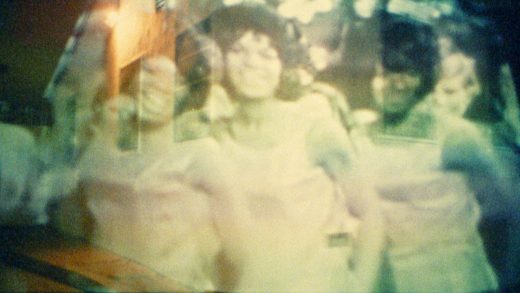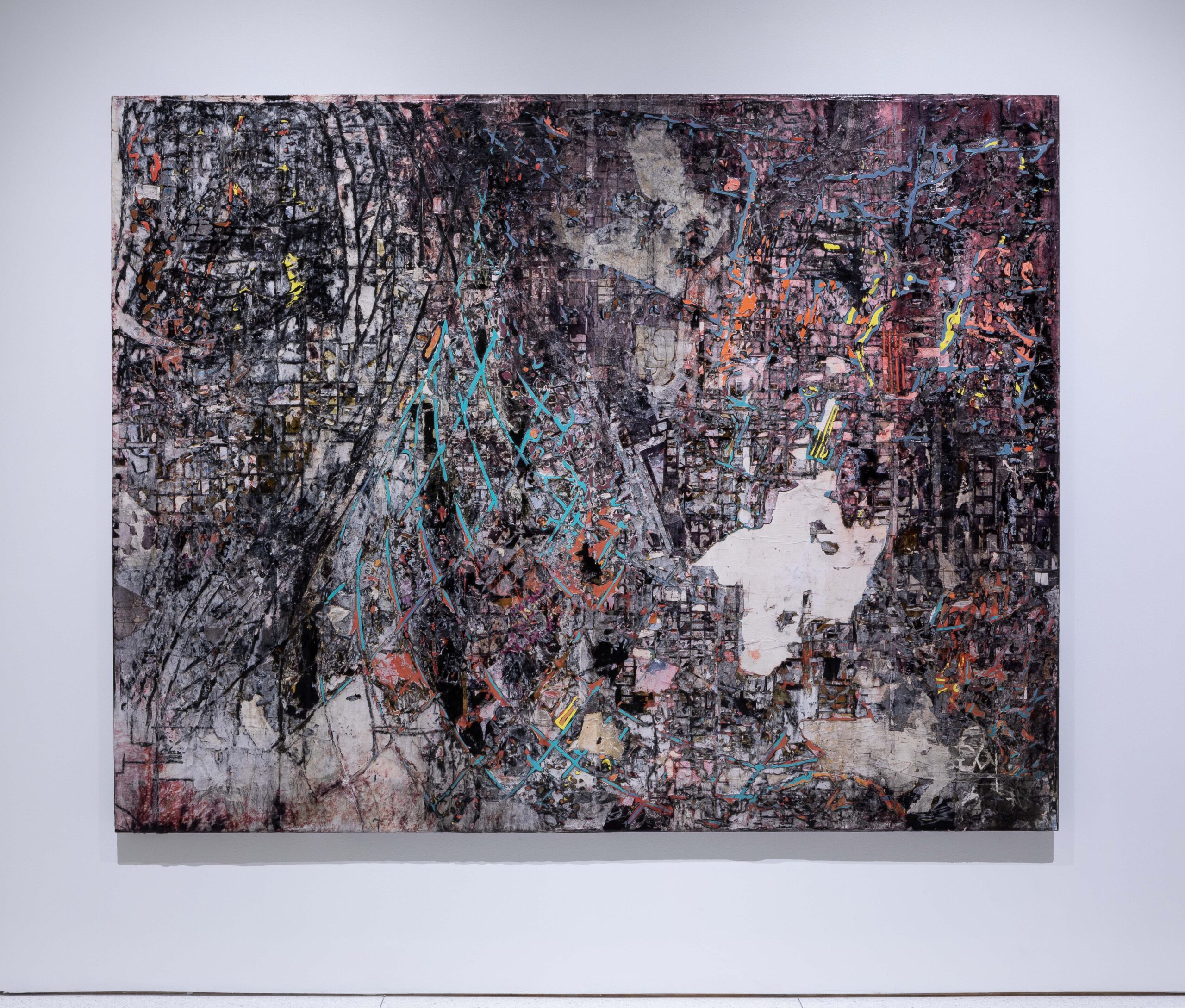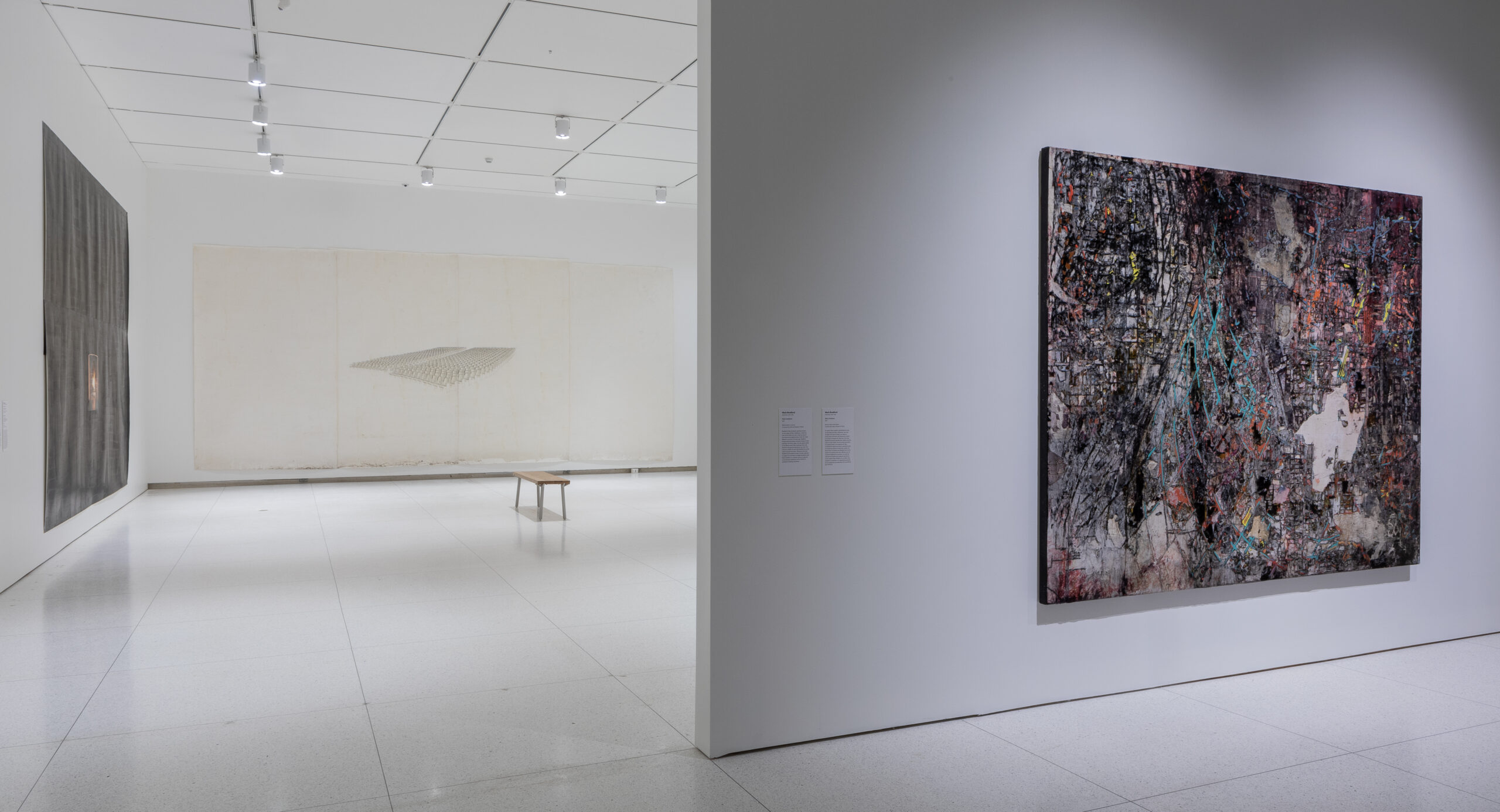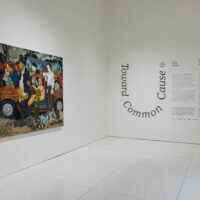Mark Bradford

Mark Bradford is known as an abstract painter, though paint only plays a minor role in his works, which are full of concrete meanings. Instead of painting, Bradford builds up layers of papers and other materials that he has collected from everyday life, creating thick surfaces that he then burrows into, scrubbing preselected sections out or blasting them off with a pressure washer. For Bradford, all materials and techniques have meaning embedded within them, and that meaning is carried forward when they are redeployed in his paintings. Throughout his career, he has used materials and tools from everyday life, choosing them for their social-political signification, to create what is now called “social abstraction.”
Bradford’s earliest works were made of “end papers,” the small, translucent tissue papers used in hairdressing that he could acquire cheaply in huge quantities from his mother’s beauty salon in South Central Los Angeles, where he grew up. Like most recent art school graduates, he needed an abundant and inexpensive material that he could experiment and fail with. He had grown up in the salon and worked there as an adult, so end papers were a material that he understood very well. Pricey oil paints would have inhibited his creativity, and he knew he needed to be unconstrained. In these early works, he alters the appearance of the hair papers in many ways—burning their edges, ripping them, wetting them so they dry with a different texture—and then pastes them on canvas in thick layers, forming patterns, such as grids and maps. The social meaning of these papers, which are central to the work of a hairdresser, connects two rarely connected worlds, those of the beauty salon and avant-garde painting.
That same combination of thrift and the need for politically meaningful material led him to expand into other kinds of papers, mostly “merchant posters” pasted up on the streets of his neighborhood. These signs, advertising payday lenders, bail bondsmen, and the purchase of “ugly houses,” for example, pointed to a neighborhood in crisis. Merchant posters are pasted up in public places in the thousands, one on top of another, and over time they form thick sheets of material that Bradford can remove and take back to his studio. He builds large and thickly layered surfaces with glue, and sometimes with rope, paint, and various other everyday materials. This done, he sets to work lacerating the surface, revealing colors, shapes, and bits of text that had been hidden far beneath the surface. The result is a work teeming with scavenged signs that smuggles appeals for justice into the unlikely form of abstract painting.




